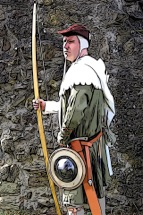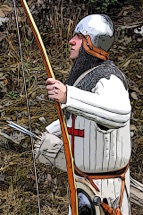The English longbowmen in the Hundred Years War
1337 - 1453



















Toxophilus.net would like to introduce you to English longbowman, their possible equipment, their way of life and my fascination with "reenactment". For over 13 years it has been my passion to develop my representation as an English archer and to offer a realistic representation as close as possible.
The site will cover four different periods of the Hundred Years War. First and foremost the military representation, of a much better equipped English archer, will be considered. Since the Hundred Years' War actually lasted 116 years, there was also a noticeable change in clothing, equipment and lifestyle during this period. In order to present this change appropriately, I distinguish between the following subdivision:
1. free Welsh archer around 1337 (beginning of the Hundred Years War)
2. English archer around 1346 (battle of Crécy)
3rd English archer around 1415 (battle of Azincourt )
4th free English archer around 1453 (end of the Hundred Years War)
In order to fill this with profound background knowledge, there is a list of my collected books, articles and sources related to the topic under Literature. In the articles I have written here, I will always include a detailed reference. I differentiate between primary, secondary and tertiary sources.
Why the name toxophilus.net ?
Today, when we talk about English archers and look back on the Hundred Years' War, we can think of such illustrious names as Crècy, Poitiers, Azincourt or Castillon. At that time, either nobody had the idea to document the knowledge of the use of the longbow as a weapon of war or there was simply a lack of appropriate education. Those who were educated (mainly aristocrats) probably did not shoot enough, and if they did, it was mainly during hunting. Experienced longbow shooters, who used their bows as a weapon in war, came mainly from the simple country folk, and were very often not educated.
Roger Ascham only wrote his book about archery for his king Henry VIII in 1545. The "Toxophilus" is considered to be the oldest and most quoted comprehensive guide to archery in European culture and also explains in detail the equipment used by archers in antiquity and the late Middle Ages. Roger Ascham was not a soldier himself, he looked at archery of his time from the perspective of a civilian.
Around 1545 it was still common to write books in Latin or Greek. Roger Ascham, however, contrary to the custom of the time, wrote his work "with an English tongue" in order to make it accessible to the widest possible readership. It is now clear that even 92 years after the Hundred Years War, knowledge was still not fully accessible to all groups of people. What distinguishes Toxophilus as a primary source is not only its status as the first work of its kind. Our knowledge of English war bows, arrows and equipment of English archers, with a few exceptions, we have from the sunken warship of the Mary Rose.
This ship sank on 19 July 1545, the same year that Roger Ascham presented King Henry VIII with his Toxophilus in 1545 after he had returned from the Battle of Boulogne.
The Hundred Years War - Social upheaval in England
On 26 August 1346, the status of English longbow archers in Europe changed. On this day the powerful army of the French King Philip VI meets his rival for the throne of France. It is the English King Edward III who awaits him northeast of the small town of Crécy en Ponthieu.
The many thousands of French knights see themselves as the flowering of the knighthood of the Christian Occident. They are just waiting to pounce on the hated English. Their pride is nourished by humiliation, as large parts of the Kingdom of France have been devastated by the English. They do not consider their own infantry, inexperienced militias and Genoese mercenaries to be their equal.
The English pursue a different tactic, they often wait for their opponents on foot.England's knights have abandoned the idea of fighting man against man - knight against knight, as the only form of warfare appropriate to their status. The experienced and battle-hardened archers, who numerically make up the largest part of the English army, have become indispensable comrades-in-arms.
They are two completely different military tactics, perhaps even world views, which collide in the first great land battle of the Hundred Years' War. The English had chosen the right tactics and thus King Edward III defeated France's King Philip VI, the entire French aristocracy, in the Battle of Crécy using only his archers.
The aristocratic warrior caste has failed. To make matters worse, the French knights are not inferior in chivalrous combat - man against man of equal rank, but have been defeated by archers born below. The bow has thus also become an instrument of social upheaval in England.
The archers in England are no longer just armed commoners who are useful for nothing but auxiliary services, but otherwise, according to the medieval knightly understanding, should stay away from the actual fight, that of knight against knight. Rather, they have developed into an independent, battle-defining branch of arms. They became a warrior elite that was accepted into the retinue of the nobility and was valued as mercenaries in other parts of Europe, especially in Italy.
This of course had an impact on the payment of the archers. Henry V paid an archer 6 pence a day in 1415. Which was as much as a good craftsman could earn in a day. At the Battle of Potiers in 1356 the Prince of Wales paid only 3 pence for archers, only those with a horse received 6 pence. This was the equivalent of a master craftsman's wage in 1356.
It was therefore one of the most impressive events in the military history of the Middle Ages, when the English, with the help of their longbowmen, won a victory over far superior armies of French knights.
The English warship Mary Rose
172 of the 250 listed longbows made of yew were found, this wood came mainly from Italy and Spain. Of these 137 are completely or almost completely preserved. The bows had an average size of 1.98 metres and many were found in particularly long chests.
In addition, approximately 2,303 complete arrows, and 7,834 fragments of the 9600 arrows listed were also found in chests. The arrows consist of 77% poplar, the rest mostly birch and alder. Shooting accessories such as arrow ammunition rings and leather arm guards were found.
The bows are in excellent condition, so that, as already mentioned, they are the main source for the study of the English longbow. Besides the bows of the Mary Rose only three other examples of English longbows are known worldwide, which have been preserved since the late Middle Ages or early modern times.



Longbow & Arquebus. The people can't shoot anymore?
As we now know, through the Mary Rose there was a large find of longbows, arrows and fragments of arrow shafts. According to Roger Ascham, it was interesting to note that shooting was no longer "state of the art" among the people around 1545 and was rarely practised in leisure time. He even denounced the lack of shooting lessons in England. He wrote literally: "Many people would buy a bow, because of its prestige, but do not shoot with it. Not out of ill will, but because they cannot shoot.
This is surprising because King Henry VIII, who ascended the English throne on 22 April 1509, set out some rules for this. He decreed that any Englishman under the age of 60 who was not lame, crippled or otherwise handicapped, on pain of a fine of 12 pence a month, had to learn to shoot with a longbow and to train.
The longbow was already replaced in the 16th century by slow and inaccurate shooting arquebuses. The historian J.F. Guilmartin argues that the training of an arquebusier takes only a few days, whereas that of an archer takes a lifetime. Anyone who has ever practiced with a crossbow can certainly confirm this similar effect.
For a long time, one problem with this change was the lack of weapons and experienced arquebusiers - there were enough bows and archers. In the wars of Henry VIII, the weapons and tactics of the late Middle Ages and early modern times still existed side by side without restriction. It was certainly due to ideological reservations that people wanted to stick to the tried and tested weapons such as longbows and lighter cavalry. Henry VIII himself was also an enthusiastic archer.
There is great agreement among military historians who study the Tudor period that the English simply slept through the great change. What was still progressive and new during the Hundred Years' War became an increasing problem.
It is even reminiscent of the arrogance of the French knights under King Philip VI at that time. The English were firmly convinced that one of them was worth at least 10 Frenchmen. The armies consisted mainly of the traditional "bow and bills", a mass of halberd bearers (so-called billmen) flanked by large divisions of archers. Heavy cavalry or firearms were considered quite unnecessary.
Henry VIII himself recognized that with archers and billmen alone, battles could no longer be won in his time. he deficit was to be compensated by extensive mercenary recruitment abroad. However, an eyewitness writes about an attack of the Scots in the north of England: "They were so well armoured that the arrows did not harm them".
The military weakness was then hotly debated at home. Allegedly there were not enough ploughing farmers left, because only the plough gave the archer the necessary strength, and "shepherds gave bad archers". Others attributed the decline to the widespread desire to play cards, and one bishop complained that "an unbelieving generation would rather fornicate in the cities than practice shooting in the fields. These statements support Roger Ascham's opinion in Toxophilus, and certainly had some part in the problem.
However, the skin problem lay in the long outdated feudalistic recruitment methods. Theoretically, the great nobles were supposed to appear at the military muster with their personal retinue and some of their tenants. But now, as everywhere else in Europe, the nobility found themselves in an economic crisis, many old families had even disappeared completely. It was often beyond the financial means of the nobility to maintain an appropriate retinue or to equip them properly. The often lamented lack of heavy riders has its cause here. In addition, many tenants refused to do military service, as they regarded it as a burdensome obligation that was not laid down in any written law.
Above all, modern warfare required a certain training in tactical maneuvers and a steadfastness in the infantry that could only be found in veterans. Even the English commander John Talbot had hardly recruited the much-vaunted Yeomen (tenants, free farmers) in the final phase of the Hundred Years War at the Battle of Castillon, but predominantly English colonists in Normandy or the French (up to 50%).
The necessary professionalism simply could not be provided by feudal forces at that time, even if they were well fed and practiced archery diligently at weekends. Of course, the technical development of armaments has also played a major part in this. As already mentioned above, an eyewitness during an attack of the Scots in the north of England reported "They were so well armoured that the arrows did not cause any damage to them".
Limits of medieval representation in re-enactment
If someone told me that his portrayal was now complete, I would look at him with big, unbelieving eyes. I will probably never finish and there will always be a continuous development. Since it is a hobby for me and I do not earn any money with it myself, I have my own limits in the budget, of course.
I would also like to have the topic "A" mentioned as authentic, which always leads to big discussions in the re-enactment and living history scene. I find continuous development a desirable goal. Nobody will ever be 100% "A", or would you like to have diseases like the plague, bad teeth, or like the English archers bone deformities (Os acromiale)?
Physically, I also have certain limits. My English "light war bow", at 80 pounds at 32 inches at the time, was probably a bow for a young adult. The bows of Mary Rose were estimated at about 100 pounds (45 kg) to 180 pounds (82 kg) by mathematical model calculations.
Where can I find what on toxophilus.net?
Explore the different sections of this website. Under "Equipment" you will find my interpretation of the objects of a longbowman divided into four periods of the Hundred Years War. Under "Pictures" you will find the corresponding equipment worn by me.
In the category "Literature" you can have a look at my previous sources, reference books etc. "Bowprimer" is supposed to be a knowledge database in the Hundred Years War, for all those who want to look up something more detailed. If you want to contact me personally, write me an email, or visit my profile on Facebook & Instagram!
Have fun with toxophilus.net and ...
Sources
Toxophilus – Die Schule des Bogenschießens, Roger Ascham,
ISBN 9783937632-69-8, Seiten 1, 6, 9 und 99
Krähen über Crécy, Dr. Johann Baier, ISBN 978-3-93892114-2, Seiten 187 und 188
Die Schlacht bei Agincourt, Dr. Johan Baier, ISBN 978-3-938921-01-2, Seite 35
Der Schwarze Prinz und die Schlacht bei Poitiers, Dr. Johan Baier,
ISBN 978-3-938921-29-6, Seite 25
Pfeil und Bogen – Von der Altsteinzeit bis zum Mittelalter, Jürgen Junkmans,
ISBN 9783938921272, Seiten 380, 382 bis 387
https://de.wikipedia.org/wiki/Langbogen
http://www.kriegsreisende.de/neuzeit/heinrich_8.htm
https://maryrose.org
Timeline
18.11.1302
Pope Boniface VIII proclaims in his bull "Unam Sanctam" the papal claim to world domination.
1309
Pope Clement V moves the papal seat to Avignon. The so-called “Babylonian exile of the Church” begins.
23/24.06.1314
Battle of Bannockburn
1318
In Venice, a law stipulates that anyone who accepts valuables and money (deposits) and transfers them by means of transfer (giro) must provide a guarantee.
20.01.1327
Edward II is forced to abdicate and less later is murdered.
19.10.1330
Edward III overthrows the regime of the Royal Mother and Roger Mortimer and gains power.
1337
Beginning of the Hundred Years War
24.06.1340
Naval battle of Sluis
26.08.1346
Battle of Crécy
1347
Calais falls
1348 - 1349
First outbreak of the plague
1350
Division of the English Parliament into Upper (House of Lords) and Lower (House of Commons), which receives the right to petition.
03.04.1367
Battle of Nájera
1376
The "good" Parliament
1381
Peasants’ Revolt
1388
The "merciless" Parliament
29.09.1399
Richard II is forced to abdicate and formally removed from Parliament the next day; a few weeks later he is assassinated in Pontefract.
1401
Parliament adopts a law on combating Lollarden, which also provides for the death penalty.
21.07.1403
Battle of Shrewsbury
1403 - 1409
Welsh Revolt under Owen Glendower
25.10.1415
Battle of Agincourt
20.05.1420
Treaty of Troyes
08.05.1429
Joan of Arc, the "Virgin of Orlèans", frees Orlèans from English siege.
30.05.1431
Execution of Joan of Arc
21.09.1435
Arras Peace Conference
1445
Johann Gensfleich (Gutenberg) from Mainz, develops letterpress printing with movable type and prints the first Gutenberg Bible printed with interchangeable types.
17.07.1453
Battle of Castillon
1453
End of the Hundred Years War
22.05.1455
1st battle of St. Albans, beginning of the Wars of the Roses
30.12.1460
Richard of York falls at Wakefield, his son Rutland is murdered.
29.03.1461
Edward of March wins power for the House of York at the Battle of Towton.
1464
Battle of Hedgeley Moor
1469
Warwick rebels against King Edward.
1470
Warwick switches to Lancaster's side, King Henry is reinstated.
04.05.1471
Battle of Tewkesbury, end of the Lancaster line.
07/8.1483
Disappearance of the princes in the Tower.
22.08.1485
Battle of Bosworth
1492
Christopher Columbus discovers America.
22.04.1509
King Henry VIII ascends the English throne.
1513
Battle of Flodden Field
Siege of Thérouanne
1523
Surrender of the town of Montdidier.
1543
Battle of Boulogne
19.07.1545
The warship Mary Rose sinks











